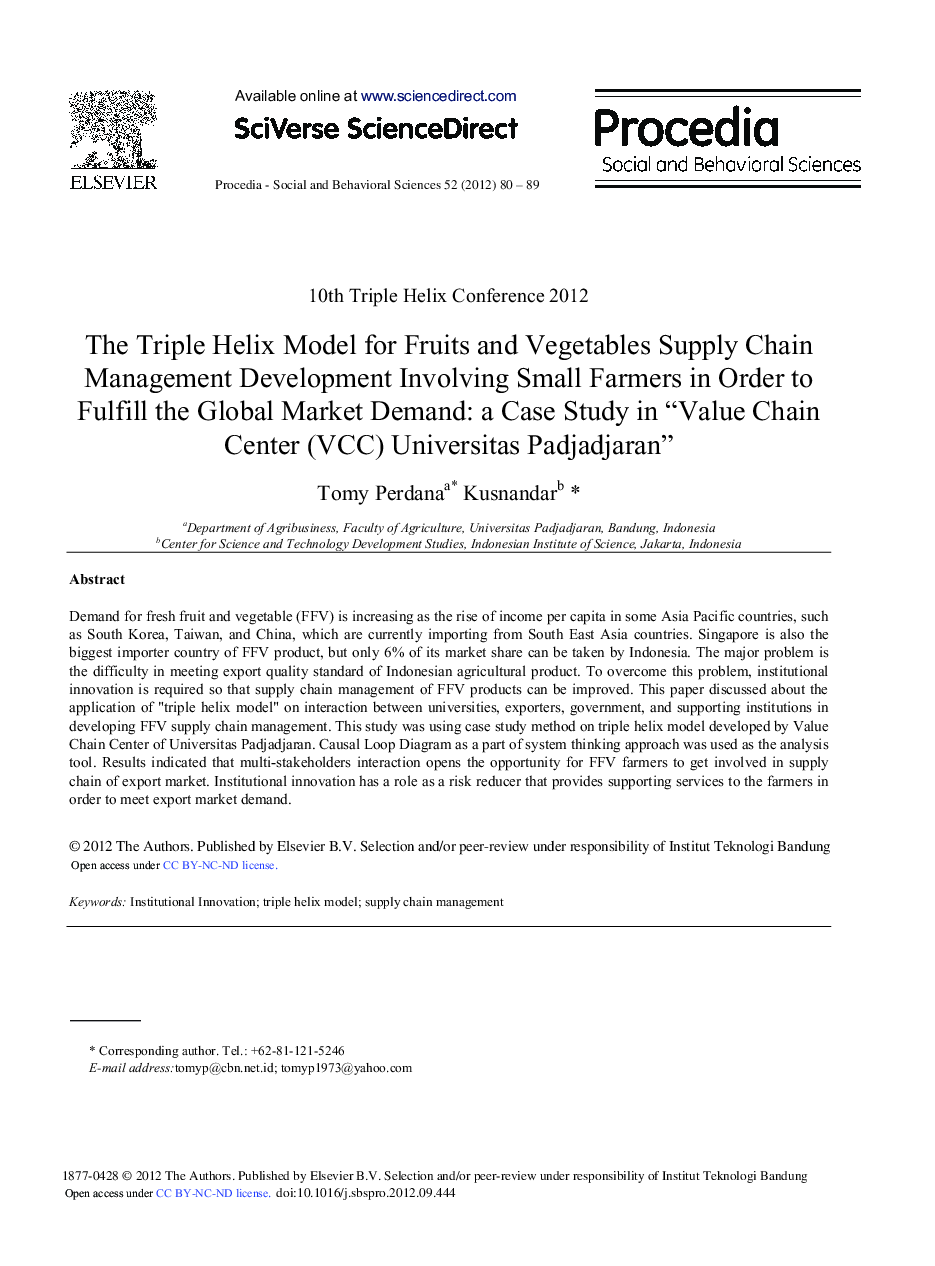| کد مقاله | کد نشریه | سال انتشار | مقاله انگلیسی | نسخه تمام متن |
|---|---|---|---|---|
| 1120623 | 1488507 | 2012 | 10 صفحه PDF | دانلود رایگان |

Demand for fresh fruit and vegetable (FFV) is increasing as the rise of income per capita in some Asia Pacific countries, such as South Korea, Taiwan, and China, which are currently importing from South East Asia countries. Singapore is also the biggest importer country of FFV product, but only 6% of its market share can be taken by Indonesia. The major problem is the difficulty in meeting export quality standard of Indonesian agricultural product. To overcome this problem, institutional innovation is required so that supply chain management of FFV products can be improved. This paper discussed about the application of “triple helix model” on interaction between universities, exporters, government, and supporting institutions in developing FFV supply chain management. This study was using case study method on triple helix model developed by Value Chain Center of Universitas Padjadjaran. Causal Loop Diagram as a part of system thinking approach was used as the analysis tool. Results indicated that multi-stakeholders interaction opens the opportunity for FFV farmers to get involved in supply chain of export market. Institutional innovation has a role as a risk reducer that provides supporting services to the farmers in order to meet export market demand.
Journal: Procedia - Social and Behavioral Sciences - Volume 52, 2012, Pages 80-89